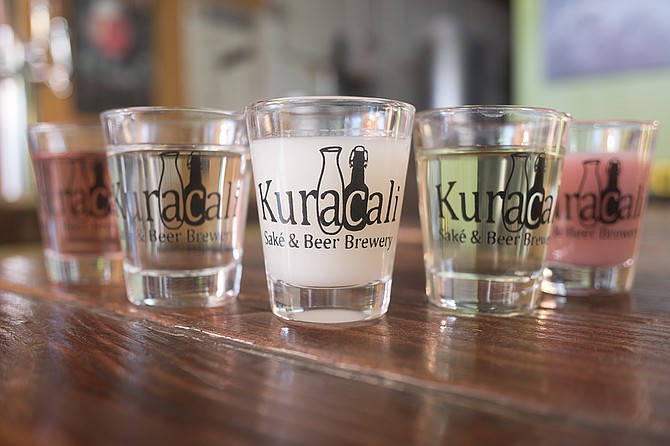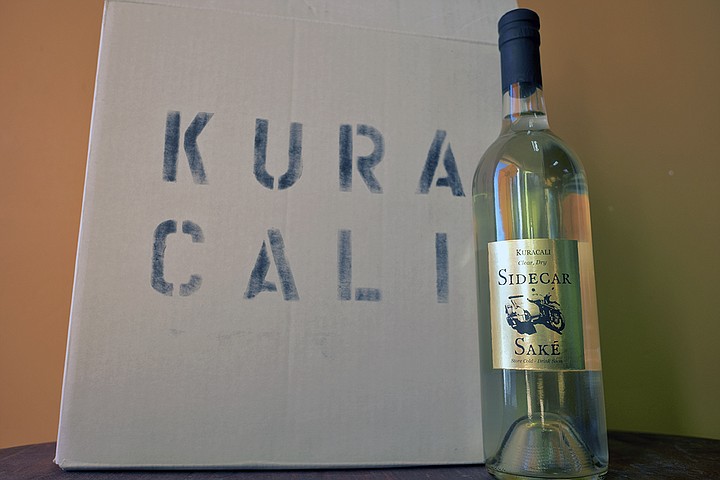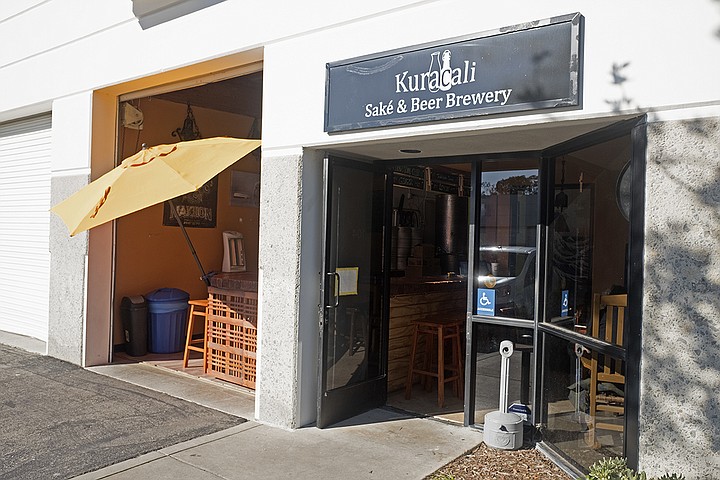 Facebook
Facebook
 X
X
 Instagram
Instagram
 TikTok
TikTok
 Youtube
Youtube

There's only one bar at Kuracali Sake & Beer Brewery, but it serves two distinct tasting rooms. Due to the quirks of state law, Kuracali owner and brewer Chuck Perkins doesn't just have to keep his beer and sake breweries separate — the same goes for their respective tasting rooms. So on one side of the bar, customers drink beer only; on the other side, sake only. And no, they can't be served together either.
"This is the one place in San Diego county you cannot have a sake bomb!" Perkins jokes. The founder of San Diego's first sake brewery got both a beer and winemaker's license when he opened for business two years ago, primarily so he could lure beer fans to San Marcos to try his take on craft sake. But as he readies Kuracali's first bottle release, Perkins has found many advantages to running a dual-purpose brewery. "The synergy has been huge," he says. "It's probably the best decision I ever made, to do both."

In the case of a beer he calls Waters of Biwa, for example, sake production helped him turn an unintentionally cloudy porter into a new beer. Having just filtered one of his sakes for the first time, he realized he could run the porter through the same filter, without clearing the sake lees first. "That doesn't have any appreciable sake alcohol," he explains, "but like a bourbon barrel stout, it has picked up the flavor as it passed through the medium." The resulting sake-tinged porter received enough of a positive response that he's going to do it again.

Meanwhile, the beer side of the operation has proven valuable in supporting sake production. Two white ales named Nakhon feature jasmine rice and lemongrass. Using the same recipe, Perkins brewed one with a standard Belgian yeast, the other with sake yeast. Visitors to the tasting room may try both to compare, but Kuracali's real benefit comes from propagating sake yeast.
"When you brew beer you get twice to four times as much yeast back at the end as when you started," Perkins notes. "When you make a sake, you don't get any yeast back. And yeast is expensive." He adds, "This is another thing nobody else in America can do because nobody else has both licenses."
But sake is where he aims to make his mark. Perkins literally built Kuracali around an enormous, one ton sack of polished rice he bought for sake production — the smallest amount he could order. "I couldn't move the rice," he recalls, "so I just dropped it down, and I built the walls around it."
To satisfy consumer interest, Kuracali offers a variety of clear and cloudy sakes, flavored with fruits like blackberry, kiwi, and blood orange. However, Perkins's primary focus is refining the pure styles: "The base sake is really where I want to show that I have mastery of the traditional technique."
With the late February introduction of 750ml bottles of a clear, dry sake dubbed Sidecar Sake, he aims to see Kuracali take its place beside Japanese sakes at local restaurants, and build on the momentum of a San Diego craft sake community that has recently grown with the addition of Miramar's Setting Sun Sake. "We want to raise the awareness of sake here," Perkins says. "We want this to be a sake dynamic place."


There's only one bar at Kuracali Sake & Beer Brewery, but it serves two distinct tasting rooms. Due to the quirks of state law, Kuracali owner and brewer Chuck Perkins doesn't just have to keep his beer and sake breweries separate — the same goes for their respective tasting rooms. So on one side of the bar, customers drink beer only; on the other side, sake only. And no, they can't be served together either.
"This is the one place in San Diego county you cannot have a sake bomb!" Perkins jokes. The founder of San Diego's first sake brewery got both a beer and winemaker's license when he opened for business two years ago, primarily so he could lure beer fans to San Marcos to try his take on craft sake. But as he readies Kuracali's first bottle release, Perkins has found many advantages to running a dual-purpose brewery. "The synergy has been huge," he says. "It's probably the best decision I ever made, to do both."

In the case of a beer he calls Waters of Biwa, for example, sake production helped him turn an unintentionally cloudy porter into a new beer. Having just filtered one of his sakes for the first time, he realized he could run the porter through the same filter, without clearing the sake lees first. "That doesn't have any appreciable sake alcohol," he explains, "but like a bourbon barrel stout, it has picked up the flavor as it passed through the medium." The resulting sake-tinged porter received enough of a positive response that he's going to do it again.

Meanwhile, the beer side of the operation has proven valuable in supporting sake production. Two white ales named Nakhon feature jasmine rice and lemongrass. Using the same recipe, Perkins brewed one with a standard Belgian yeast, the other with sake yeast. Visitors to the tasting room may try both to compare, but Kuracali's real benefit comes from propagating sake yeast.
"When you brew beer you get twice to four times as much yeast back at the end as when you started," Perkins notes. "When you make a sake, you don't get any yeast back. And yeast is expensive." He adds, "This is another thing nobody else in America can do because nobody else has both licenses."
But sake is where he aims to make his mark. Perkins literally built Kuracali around an enormous, one ton sack of polished rice he bought for sake production — the smallest amount he could order. "I couldn't move the rice," he recalls, "so I just dropped it down, and I built the walls around it."
To satisfy consumer interest, Kuracali offers a variety of clear and cloudy sakes, flavored with fruits like blackberry, kiwi, and blood orange. However, Perkins's primary focus is refining the pure styles: "The base sake is really where I want to show that I have mastery of the traditional technique."
With the late February introduction of 750ml bottles of a clear, dry sake dubbed Sidecar Sake, he aims to see Kuracali take its place beside Japanese sakes at local restaurants, and build on the momentum of a San Diego craft sake community that has recently grown with the addition of Miramar's Setting Sun Sake. "We want to raise the awareness of sake here," Perkins says. "We want this to be a sake dynamic place."
Comments